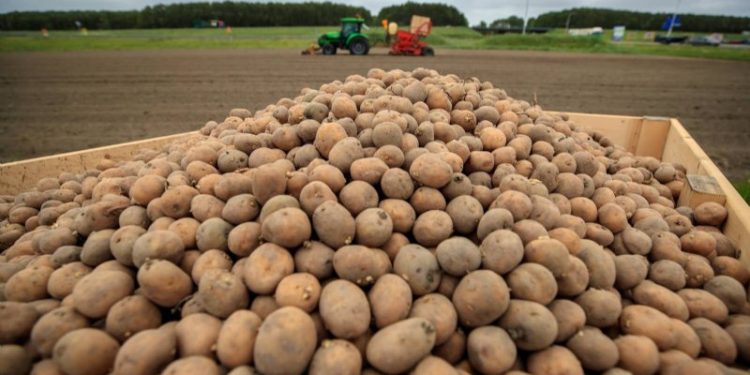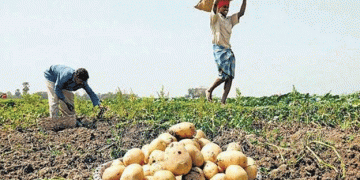Problems with the appearance of consumer potatoes in the spring are caused, on the one hand, by the viability of the seed material, and on the other hand, by all the actions that the seed material has undergone. These are the important findings of the six-year chain study “Improving Seed Quality” that was recently completed.
The Seed Quality Improvement study was launched in 2016 after years of emerging problems in consumer growing. The United Potato Business Community joined forces to find out why. Until then, links to each other were often found within the chain.
The Nak Inspection Service initiated the study, which was funded by members of the Potato Industry Association, the Dutch Potato Organization and BO Akkerbau. NAK researcher Johannes Ransign determined that there are two possible causes for the problems.
First of all, a batch of seedlings with moderate viability under sub-optimal conditions is more likely to be in trouble than a vital batch. For this purpose, Ransijn has developed a stress test that predicts with a high degree of certainty whether a lot of seed potatoes is important enough. Trading houses currently use this stress test to identify vulnerabilities at an early stage.
In addition, the researcher found that poor attendance was also related to how seed was handled in the chain. Fall height, storage temperature and humidity play a big role in this as they can greatly affect the quality of the seed. Greater attention to the batch and optimization of the storage mode leads to less loss of quality, concludes Runsign.
In order to draw the attention of all stakeholders to all issues of interest, a checklist was drawn up based on the chain study. Field service staff of trading houses and potato processing companies will discuss these issues with growers this coming spring. The focus is on raising awareness that everyone in the chain must do their part to limit the cost of failure associated with a disappointing turnout.
The vast majority of FNV members working in greenhouse horticulture do not agree with the employers’ final proposal.
According to the union, there is a significant gap between the employers’ final offer and the FNV’s wage requirements. Employer representatives are proposing a 3 percent increase in wages from January 1, 2023, and by 2 percent from July 1, 2023. Director Linda Slugter of FNV Agrarisch Groen claims that with this proposal, the number of employees will certainly be reduced by 5 percent.
Slagter noemt de stap van de FNV-leden om hiermee niet akkoord te gaan dapper. Zij vindt ook dat de loyaliteit van de werknemers naar hun werkgevers te vaak op de proef wordt gesteld. ‘Wij zijn hierin teleurgesteld en vragen de werkgevers met een beter bod te komen.’
General price compensation
The FNV wants the increase in living expenses to be reflected in wages. In addition, the trade union proposes to include general price compensation in the collective agreement. Slugter says FNV understands that greenhouse gardeners are having a hard time too, but she also sees that more and more employees no longer know how to financially support this.
“This is leading to dissatisfaction in the workplace, and the employers’ final proposal for a collective bargaining agreement does not improve the situation,” said the union’s chief executive. According to FNV, an average of about 35,000 employees are engaged in greenhouse horticulture. During the peak season, this number is much higher.






